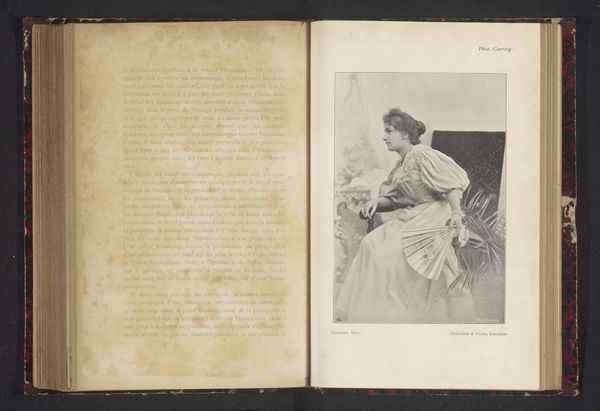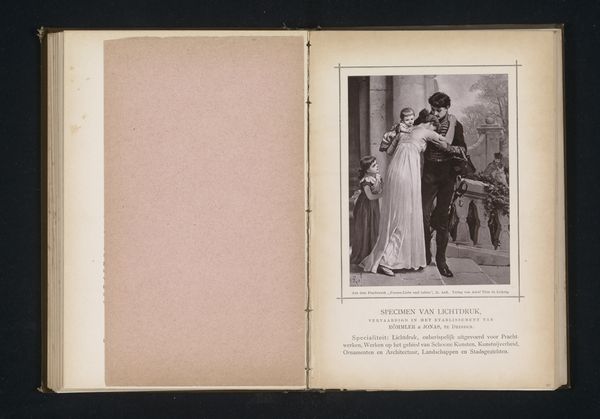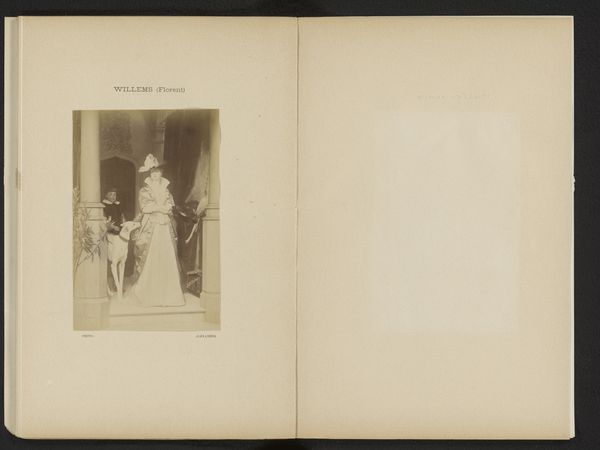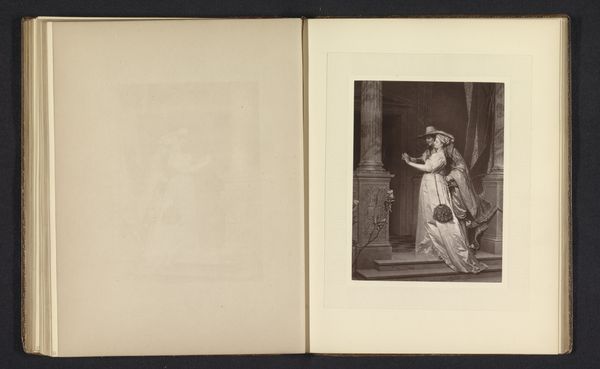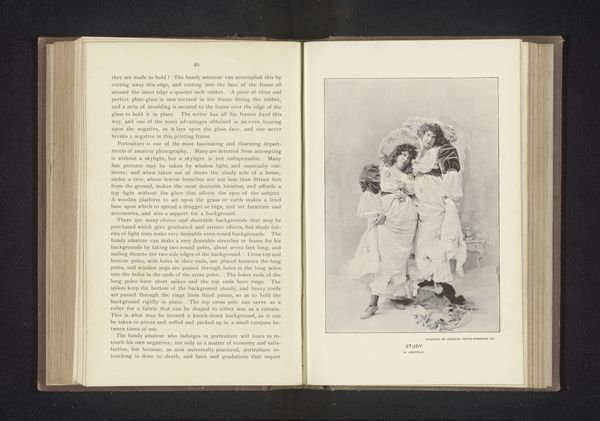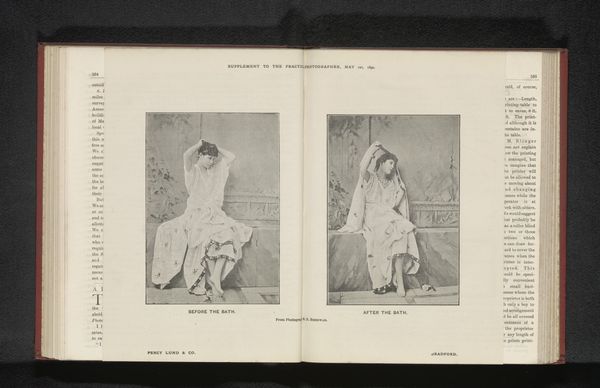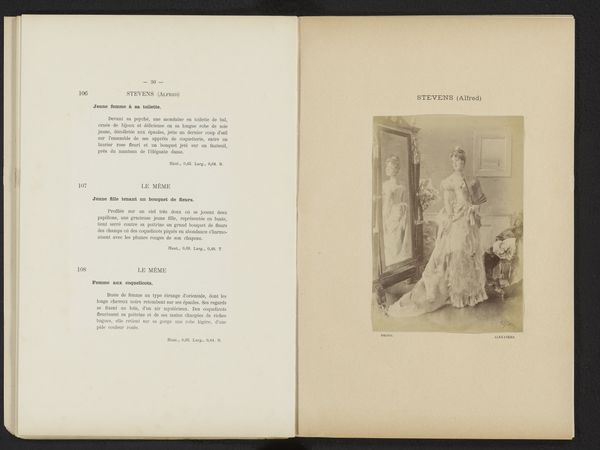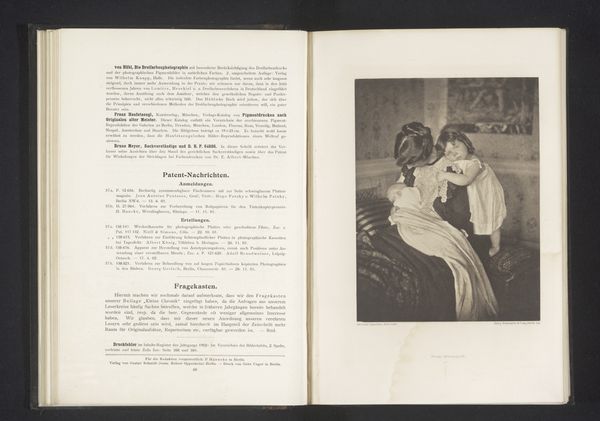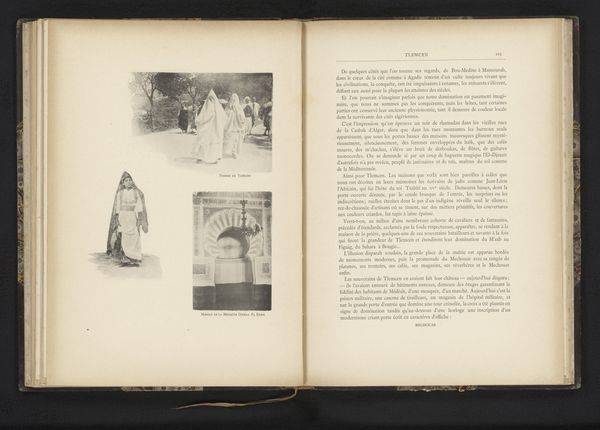
Dimensions: height 150 mm, width 108 mm
Copyright: Rijks Museum: Open Domain
This photograph by J. Ed. Rosch, titled ‘A Study’, is printed on a page taken from a book instructing readers on the technical aspects of metal etching. You’ll notice that the page on the left gives a recipe for asphaltum, an etching resist. Metal etching is a labor-intensive printmaking process. The metal plate is first coated with a waxy, acid-resistant substance and then a design is scratched into the surface, exposing the bare metal. Acid is then applied to ‘bite’ into the exposed lines, creating grooves. Once the desired depth is achieved, the acid is neutralized and the resist removed. The plate is then inked and wiped, leaving ink only in the etched lines, and printed onto paper under high pressure. Consider the relationship between the refined image of the model in her bridal dress, and the means of its technical production. These reproductive technologies democratized art and information, but also relied on complex divisions of skilled and unskilled labor. The presence of this image in an instruction manual underscores the intersection of art, craft, and industrial processes in our understanding of visual culture.
Comments
No comments
Be the first to comment and join the conversation on the ultimate creative platform.

